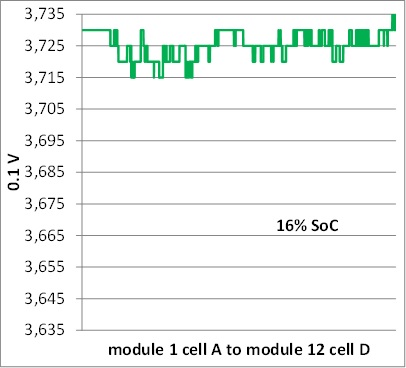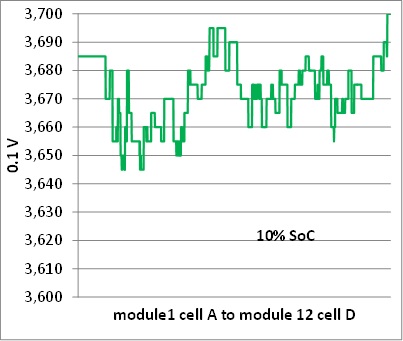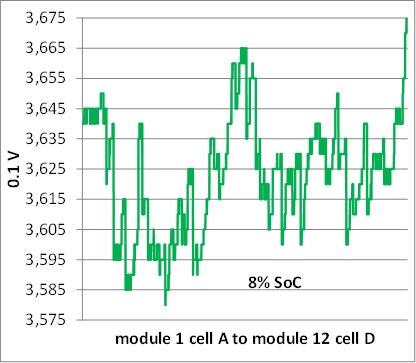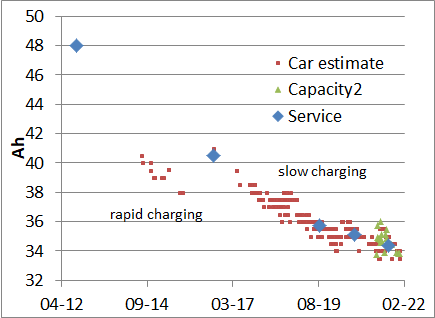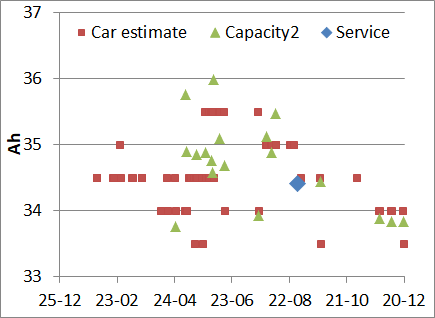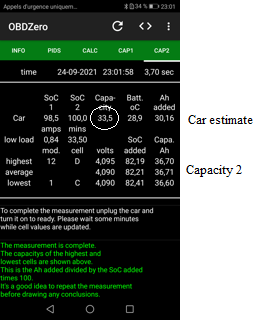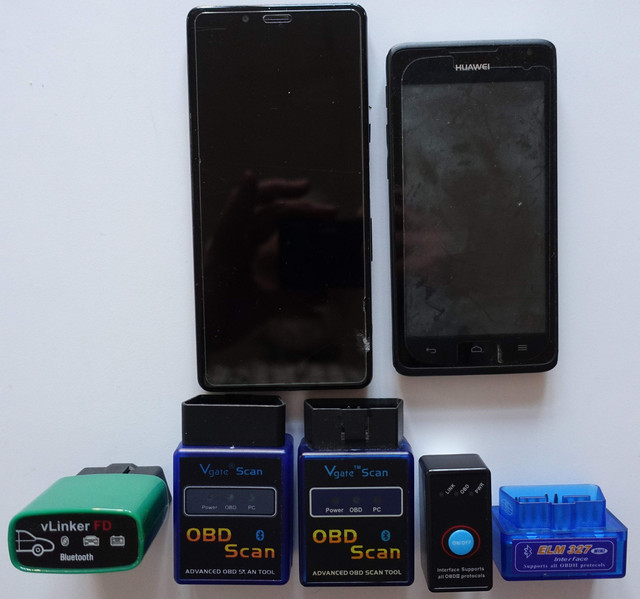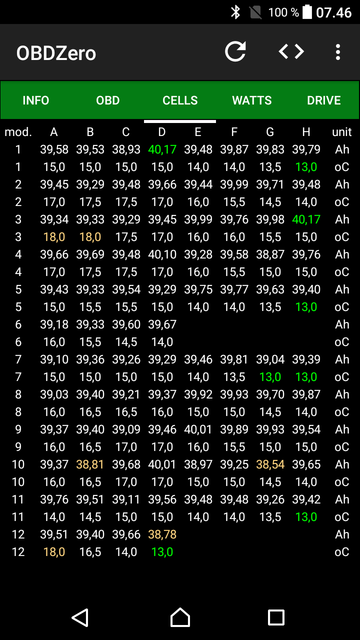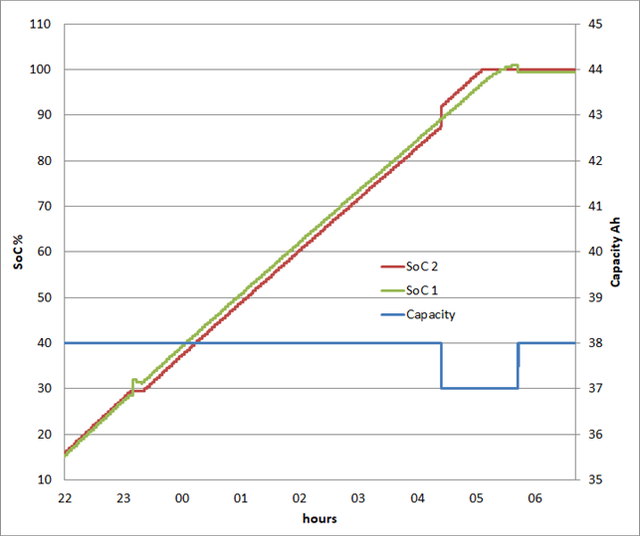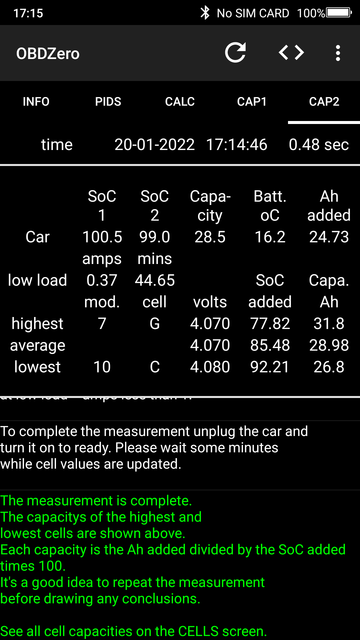DBMandrake
Well-known member
Forgive me if I've missed it as I've only skimmed this thread, but in all your recording of battery measurements for your car, have you ever checked the spread of capacity of the individual cells, or are you only recording and plotting the overall usable pack capacity reported by the BMS.
This is a very important factor, because without checking the capacity of individual cells (which can be roughly estimated by their relative voltages at a low SoC like 20%) you can't be sure whether what you're seeing is normal expected degradation (all cells degrading roughly equally) or whether you're seeing one or more substandard or failing cells bringing the capacity down below what it should be.
For example in my car the spread of cell capacity goes all the way from about 33Ah to 40Ah in the same pack from worst to best cells, yet I have seen at least one other C-Zero where the cells were all almost perfectly balanced in capacity even at a relatively high mileage.
Clearly in my pack some cells have not been as reliable or durable as others, and this possibly points the finger at poor quality control during cell manufacturing or testing.
If you're lucky and you get all "good" cells in your pack it will last well, if you're unlucky and you get one or two "bad" cells in your pack the usable capacity will degrade a lot faster than normal...
This is a very important factor, because without checking the capacity of individual cells (which can be roughly estimated by their relative voltages at a low SoC like 20%) you can't be sure whether what you're seeing is normal expected degradation (all cells degrading roughly equally) or whether you're seeing one or more substandard or failing cells bringing the capacity down below what it should be.
For example in my car the spread of cell capacity goes all the way from about 33Ah to 40Ah in the same pack from worst to best cells, yet I have seen at least one other C-Zero where the cells were all almost perfectly balanced in capacity even at a relatively high mileage.
Clearly in my pack some cells have not been as reliable or durable as others, and this possibly points the finger at poor quality control during cell manufacturing or testing.
If you're lucky and you get all "good" cells in your pack it will last well, if you're unlucky and you get one or two "bad" cells in your pack the usable capacity will degrade a lot faster than normal...




